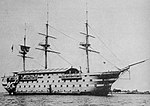The Monoliths (Manchester-by-the-Sea)

The Monoliths, formerly known as Agassiz Rock, is a 116-acre (47 ha) park in Manchester-by-the-Sea, Massachusetts, owned and maintained by The Trustees of Reservations. The park's name is from two examples of large glacial erratic boulders plucked from bedrock. As glaciers scoured this landscape, the mass of bedrock forming the hill proved more resistant than the surrounding soil, forcing the bottom of the glacier up and over the hill. The north side was smoothed and the south side left steep and rugged as the glacier broke off chunks of rock as it passed. Little Rock is a granite monolith on one of the trails. It rests on a small jagged stone, leaving an opening below. A short distance away, other boulders lie perched on the edge of this glaciated upland. Below, in a small shrub swamp, rests thirty-foot-tall Big Rock. Its depth is unknown.The trail to the site is a one-mile loop that passes both Big and Little rocks. Following long periods of rain the area surrounding Big Rock often floods.
Excerpt from the Wikipedia article The Monoliths (Manchester-by-the-Sea) (License: CC BY-SA 3.0, Authors, Images).The Monoliths (Manchester-by-the-Sea)
Southern Avenue,
Geographical coordinates (GPS) Address Nearby Places Show on map
Geographical coordinates (GPS)
| Latitude | Longitude |
|---|---|
| N 42.596336111111 ° | E -70.767430555556 ° |
Address
The Monoliths
Southern Avenue
01929
Massachusetts, United States
Open on Google Maps







